Found after a century beneath the waves – British troopship sunk during WWI, five years to the day after the Titanic sank… with a passenger on board who survived BOTH disasters
A British troop transport ship carrying a survivor of the Titanic, which sank during World War I, was torpedoed in the Aegean Sea.
The SS Arcadian was built as an ocean liner and chartered to the Royal Navy in 1915. The ship sank on 15 April 1917, killing 279 people.
It was exactly five years after the Titanic sank, and one of the survivors, Thomas Threlfall, would also survive the sinking of the Arcadian.
Now, more than a century later, the wreck has been recovered by a Greek team at a depth of 163 metres, southeast of the Cycladic island of Sifnos.
Team leader Kostas Thoctarides said: ‘The main feeling was excitement and a sense of satisfaction. We have been reading this exciting story with so many fascinating aspects for a long time.
A British troop ship torpedoed in World War I with a Titanic survivor aboard has been discovered in the Aegean Sea (wreck pictured above)
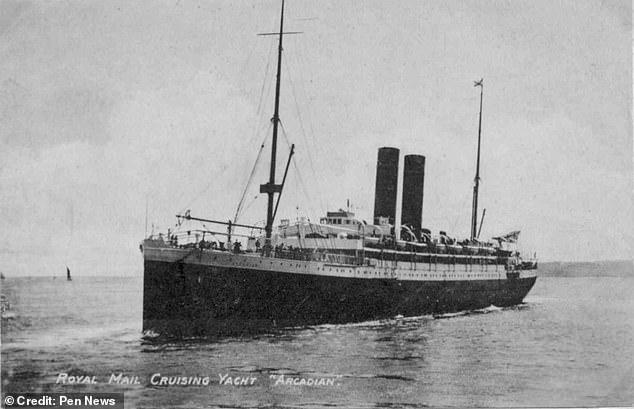
The SS Arcadian (pictured) was built as an ocean liner and chartered to the Royal Navy in 1915. On 15 April 1917, the ship sank, killing 279 people.
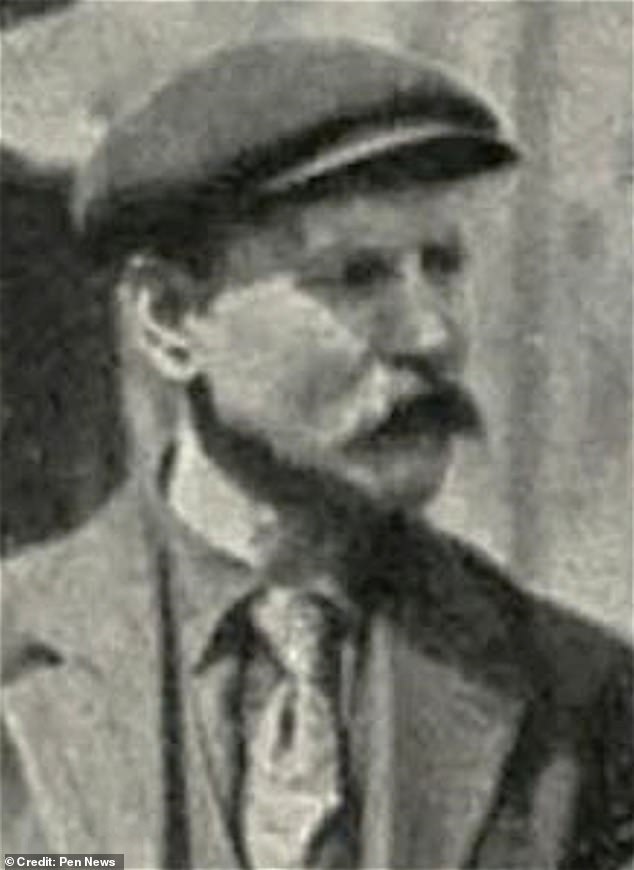
It was exactly five years after the Titanic sank, and one of the survivors, Thomas Threlfall (pictured), would also survive the sinking of the Arcadian
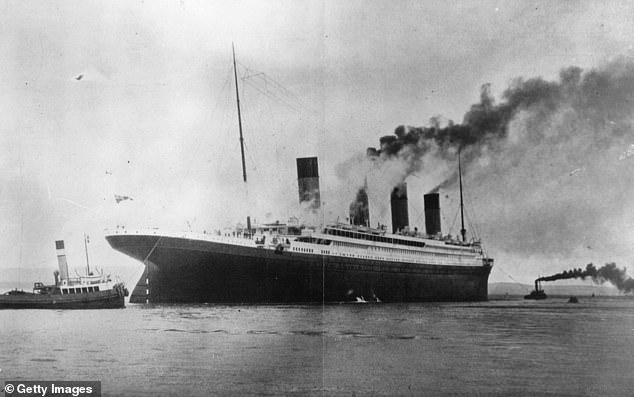
The photo shows the luxury White Star liner Titanic, which sank in 1912 on its maiden voyage to America.
‘Then we saw her image on the seabed, something the human eye sees for the first time.
‘For us it was a journey into the past and history of the Arcadian area, which is unknown to most people in Greece.’
The Arcadian was sunk en route from Salonika in Greece – modern-day Thessaloniki – to Alexandria in Egypt.
She had sailed west towards the Cyclades, hoping to avoid a German U-boat discovered off the island of Ikaria, but was unsuccessful.
The crew had just completed an abandon ship exercise when the torpedo struck at 5:44 p.m.
The ship was fired upon by the UC-74 and hit the Arcadian on the starboard side, between the bridge and the foremast.
While most of the crew was still on deck from the exercise, Captain Charles L. Willats launched the lifeboats and gave the order to abandon ship – for real this time.
Just five minutes after the explosion, the bow of the Arcadian disappeared under water, while the stern rose out of the sea.
Her escort, HMS Sentinel, led the rescue operation, and some two and a half hours later French warships from Milos also joined the rescue operation.
A total of 1,058 people were rescued and 279 people lost their lives, including 34 crew members, ten navy members and two civilians, the rest were from the military.
Mr Threlfall later said: ‘It was the same day and in the same month that the Titanic sank, and I came out of both affairs safely.’
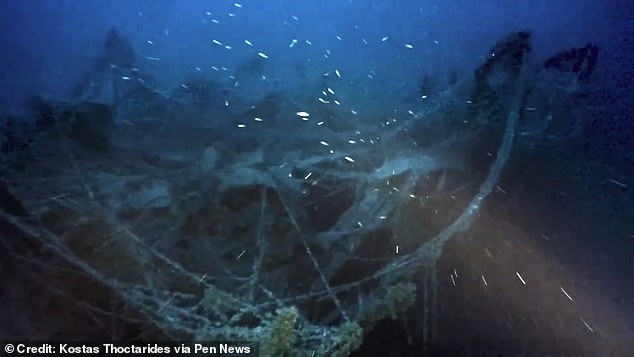
Now, more than a century later, the wreck of the SS Arcadian has been found, discovered by a Greek team at a depth of 163 metres, southeast of the Cycladic island of Sifnos
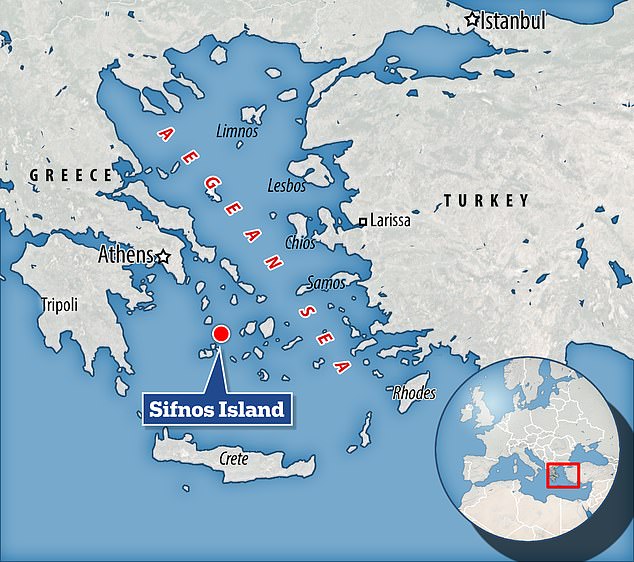
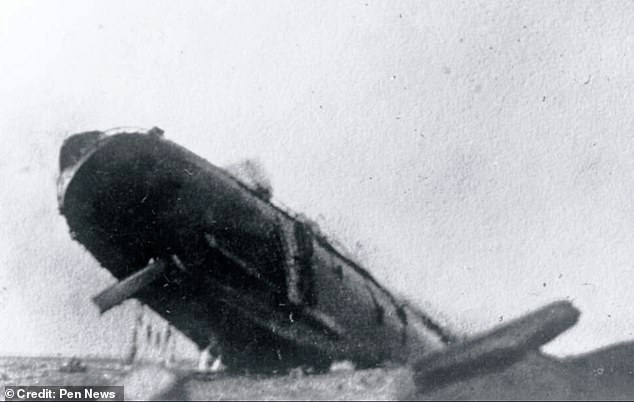
The Arcadian was sunk en route from Salonika in Greece – now Thessaloniki – to Alexandria in Egypt
He continued: ‘The Titanic was stationary for a few hours and we had time to turn around, but of course you couldn’t stay in the water that night.
‘This time we had calm seas and warm weather, and you had a chance, but on the Titanic you died almost immediately after you stepped into the water.’
According to a statement from Planet Blue, Mr Thoctarides’ company, the Arcadian was in “excellent condition” and was “one of the most impressive wrecks in Greece”.
The sequel: ‘It seems as if time stood still at the moment he fell in 1917.’
It also stands upright in the water, presumably because the bow hit the seabed while the stern was still sinking.
The hole made by the torpedo is still visible.
For Mr Thoctarides, it is the culmination of a decades-long effort. He said: ‘Our historical research into Arcadian began more than 20 years ago with the collection of information, mainly from the British and German archives.
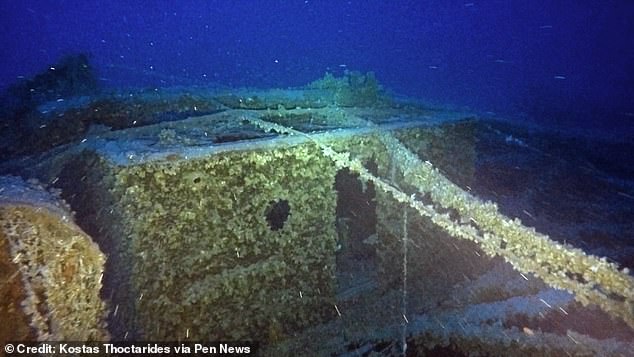
This photo shows the aft accommodation on the wreck of the SS Arcadian
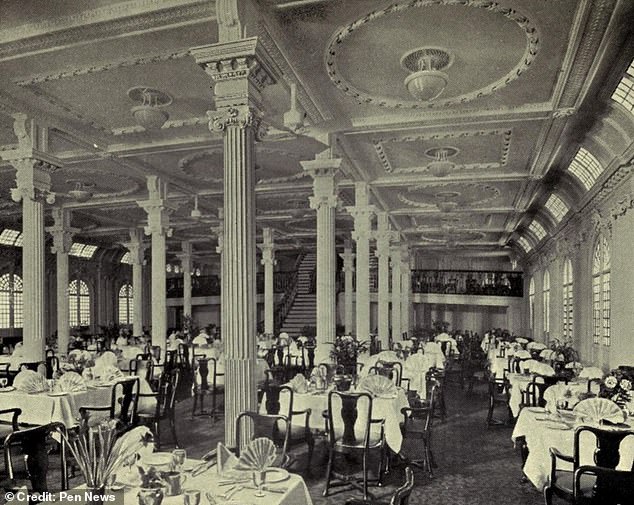
Above you see the dining room of the SS Arcadian, which sank during World War I.
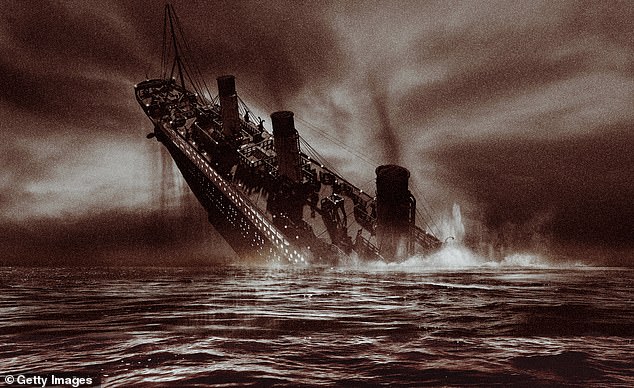
Survivor Thomas Threlfall said after the sinking of the SS Arcadian: ‘It was the same day and month that the Titanic (pictured) sank, and I came out of both cases safely’
‘We have been collecting data on the subject since the year 2000. Since the wreck is located in a fairly offshore area and requires a long journey to get there, we wanted to be as prepared as possible for these investigations.
“So we built up quite a large file on Arcadian and when we got the chance to be in the area for underwater work, we were able to locate it relatively quickly using sonar.”
No remains or personal items were found on the ship. The ship was explored from outside using a ROV (remotely operated vehicle).
Mr. Thoctarides dedicated the discovery to the victims of the ship Arcadian.
The ship was built in 1899 by the company Vickers, Sons & Maxim at their shipyard in Barrow-in-Furness, England.
The ship was built for the Pacific Steam Navigation Company and was initially named Ortona. After being taken over by the Royal Mail Steam Packet Company in 1906, she was renamed Arcadian.
Her competitor, the UC-74, was built in 1916 at the Vulcan shipyard in Hamburg and sank a total of 37 ships during her career.
She was interned in Barcelona in 1918 after running out of fuel. She surrendered to France in 1919 and was broken up in Toulon two years later.
